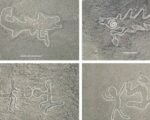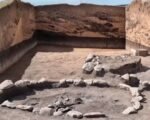The Indiana Department of Natural Resources (DNR) has announced a reduction in the bonus antlerless deer quotas for Allen and Wabash counties. This decision comes in response to the significant impact of Epizootic Hemorrhagic Disease (EHD) on the local deer population. The quotas have been lowered from two to one bonus antlerless deer for the upcoming hunting season. This measure aims to help the deer population recover and ensure sustainable hunting practices in the affected areas.
Impact of Epizootic Hemorrhagic Disease
Epizootic Hemorrhagic Disease (EHD) has had a severe impact on the deer population in Allen and Wabash counties. EHD is a viral disease transmitted by biting midges, commonly known as sand gnats or “no-see-ums.” The disease causes high fever in deer, leading them to seek water sources where they often succumb to the illness. Symptoms of EHD include lethargy, excessive salivation, and disorientation. The disease is often fatal, although some deer may recover and develop immunity.

The outbreak of EHD in these counties has been particularly severe this year, prompting the DNR to take action. By reducing the bonus antlerless deer quotas, the DNR aims to mitigate the impact of the disease and allow the deer population to stabilize. This decision is part of a broader strategy to manage wildlife health and ensure the sustainability of hunting practices in Indiana.
Adjustments to Hunting Regulations
The reduction in bonus antlerless deer quotas will affect hunters in Allen and Wabash counties. Hunters will now be limited to harvesting one bonus antlerless deer instead of two. This change is intended to reduce the pressure on the already stressed deer population and help it recover from the effects of EHD. The DNR has emphasized the importance of responsible hunting practices and the need for hunters to adhere to the new regulations.
In addition to the quota reduction, the DNR is encouraging hunters to report any deer showing signs of EHD. This information is crucial for monitoring the spread of the disease and assessing its impact on the deer population. Hunters can report sightings of sick or dead deer through the DNR’s online reporting system. The data collected will help the DNR make informed decisions about future wildlife management strategies.
Community and Conservation Efforts
The local community and conservation groups have been actively involved in addressing the EHD outbreak and supporting the DNR’s efforts. Public awareness campaigns have been launched to educate residents about the disease and the importance of reporting sick or dead deer. These initiatives aim to foster a collaborative approach to wildlife conservation and ensure the long-term health of the deer population.
Conservation organizations are also working closely with the DNR to implement measures that can help prevent future outbreaks of EHD. These measures include habitat management practices that reduce the breeding grounds for biting midges and improve the overall health of the deer population. By working together, the community and conservation groups are playing a vital role in safeguarding Indiana’s wildlife.














